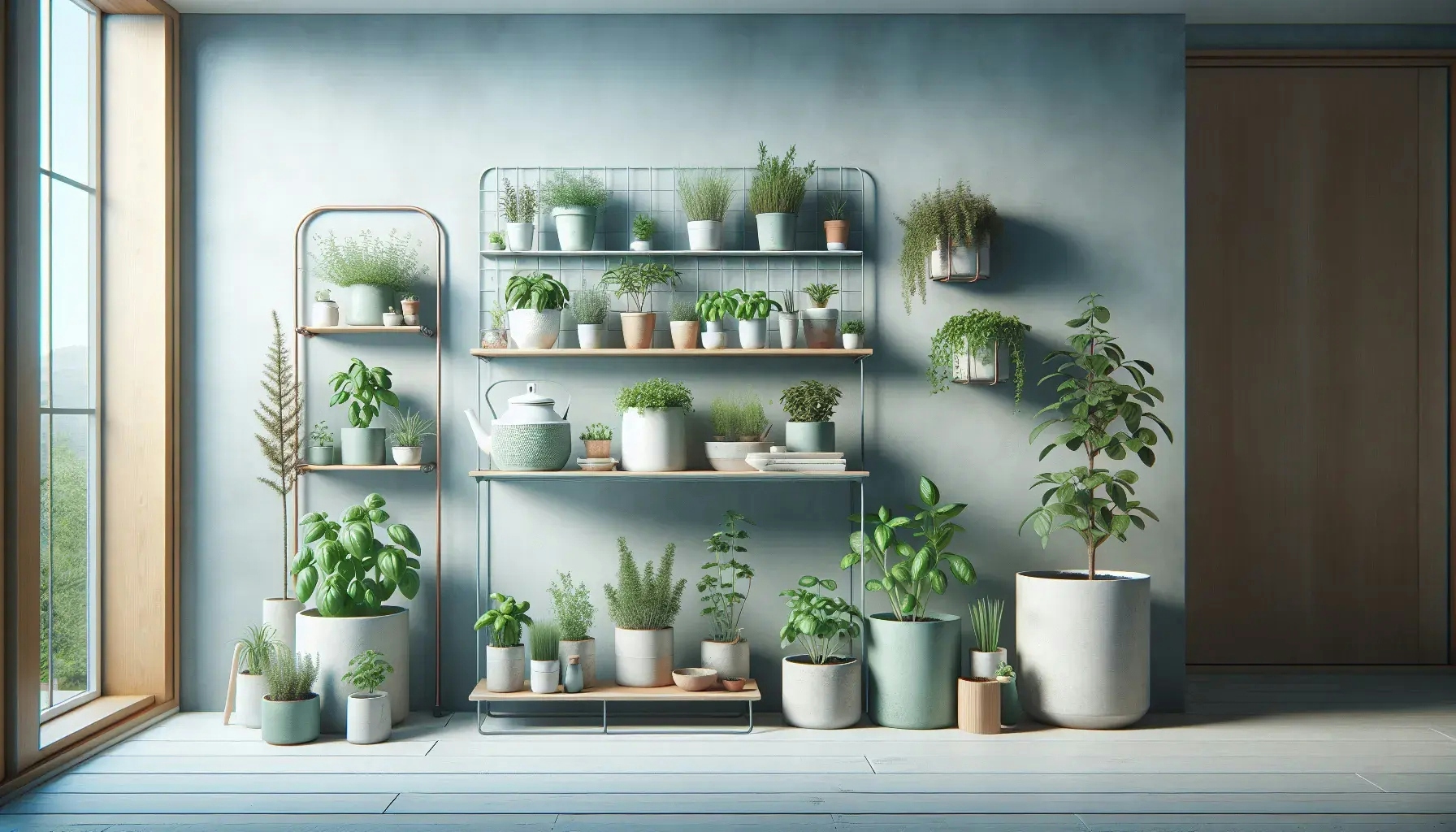Indoor Herb Garden Setup Guide
Best of Home & Garden

Are you a gardening enthusiast looking to bring the outdoors inside? Or perhaps a culinary adventurer seeking fresh herbs at your fingertips? This comprehensive guide to setting up an indoor herb garden is your one-stop solution. We'll walk you through the process, from choosing the right herbs to maintaining your indoor garden. Let's embark on this green journey together!
Choosing the Right Herbs for Your Indoor Garden
When starting your indoor herb garden, the first step involves selecting the right herbs. Not all herbs thrive indoors, so it's crucial to choose those that can adapt to indoor conditions. Basil, chives, parsley, mint, and thyme are excellent choices for beginners. These herbs not only grow well indoors but also add a burst of flavor to your dishes.
Consider your culinary preferences when selecting herbs. If you love Italian cuisine, basil and oregano are must-haves. For those who prefer Asian dishes, consider growing lemongrass and coriander. Remember, your indoor herb garden should cater to your taste buds.
Once you've decided on the herbs, it's time to source them. You can start your indoor herb garden with seeds, seedlings, or mature plants. Seeds are a cost-effective option, but they require more time and care to germinate. Seedlings and mature plants, on the other hand, provide instant gratification but can be more expensive.
Setting Up the Perfect Environment
After selecting your herbs, the next step is to create the perfect environment for them to thrive. Herbs need plenty of sunlight, so place your garden near a south or west-facing window if possible. If natural light is scarce, consider using grow lights. These artificial light sources can provide the full spectrum of light that herbs need to grow.
Temperature is another critical factor. Most herbs prefer temperatures between 60 and 70 degrees Fahrenheit. Avoid placing your herbs near drafts or heat vents, as sudden temperature changes can stress the plants.
Humidity is also important. While most herbs prefer a relatively humid environment, too much humidity can lead to fungal diseases. To strike a balance, consider using a pebble tray or a room humidifier.
Choosing the Right Containers and Soil
The next step in setting up your indoor herb garden involves choosing the right containers and soil. When it comes to containers, drainage is key. Herbs don't like wet feet, so choose containers with drainage holes to prevent waterlogging.
The size of the container also matters. Larger herbs like rosemary and bay need bigger pots, while smaller herbs like thyme and oregano can thrive in smaller containers. As a general rule, choose a container that's twice the size of your plant's root ball.
When it comes to soil, herbs prefer well-draining soil. A good-quality potting mix, preferably one designed for herbs or vegetables, is a good choice. Avoid using garden soil, as it can compact in containers and hinder root growth.
Planting and Caring for Your Herbs
Now that you have your herbs, environment, containers, and soil ready, it's time to plant. Fill your container with soil, leaving about an inch at the top. Place your herb in the center of the pot, ensuring the top of the root ball is level with the soil surface. Fill in around the roots with more soil, pressing gently to remove air pockets.
Watering is a crucial part of herb care. Overwatering is a common mistake, so it's important to water only when the top inch of soil feels dry to the touch. Most herbs prefer their soil on the drier side, so when in doubt, it's better to underwater than overwater.
Harvesting and Using Your Herbs
The final step in your indoor herb garden journey is perhaps the most rewarding - harvesting and using your herbs. Most herbs are ready to harvest just as they start to flower. To harvest, simply snip off the top third of the plant. Always leave at least two-thirds of the plant intact to allow for regrowth.
Once harvested, your herbs are ready to use in your favorite dishes. Fresh herbs can elevate even the simplest meals, adding a burst of flavor and a touch of gourmet. From basil in your pasta to mint in your mojito, the possibilities are endless!
Troubleshooting Common Problems
Despite your best efforts, you may encounter some problems with your indoor herb garden. Yellowing leaves can indicate overwatering, while wilting leaves may suggest a lack of water. If your herbs are leggy and weak, they may need more light.
Pests can also be a problem, even indoors. Aphids, spider mites, and whiteflies are common indoor pests. If you notice any pests, remove them manually or use an organic insecticidal soap.
Remember, patience is key when growing herbs indoors. Don't be discouraged if your first few attempts aren't successful. With time and experience, you'll soon have a thriving indoor herb garden.
Wrapping Up Your Indoor Herb Garden Journey
Setting up an indoor herb garden may seem daunting, but with the right knowledge and tools, it's a rewarding endeavor. From choosing the right herbs to troubleshooting common problems, we've covered everything you need to start your indoor herb garden. So why wait? Start your indoor herb garden today and enjoy the benefits of fresh, homegrown herbs all year round!